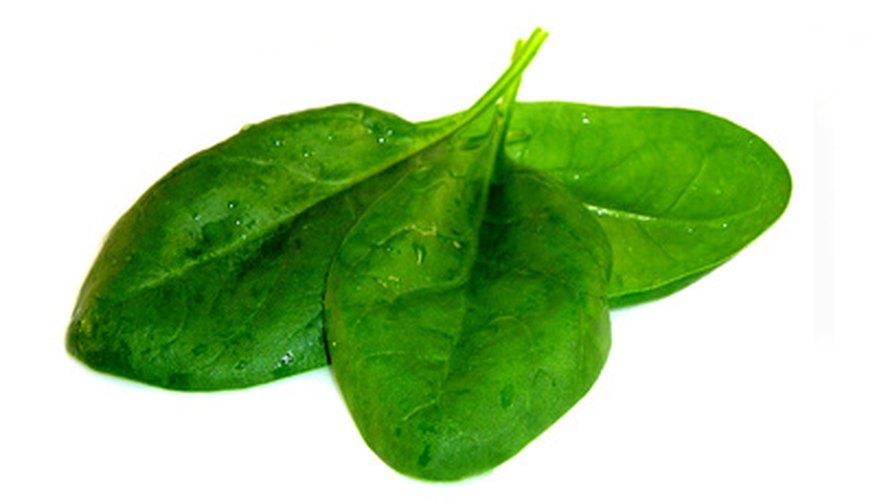Oxalic acid is a chemical substance that occurs naturally in certain types of foods. Oxalic acid in large quantities can have negative effects in the body because it can bind chemically with certain metals such as magnesium and calcium commonly found in foods.
Vegetables
Vegetables high in oxalic acid that you should avoid include sweet potatoes, celery, spinach, Brussels sprouts, eggplant, chives, broccoli, beets, carrots, green peppers, eggplant, Romaine lettuce and celery. On the end of the spectrum, some vegetables that are low in oxalic acid are iceburg lettuce, squash, sprouts, cabbage, turnips, cauliflower and cucumbers.
Beverages
Beverages high in oxalic acid include beer, most types of tea, cocoa and chocolate milk and all other chocolate-based beverages. Drink plenty of fluids if you are on a low-oxalate diet, especially if you're attempting to pass kidney stones (a common cause of a doctor-prescribed diet that contains foods low in oxalic acid). Low oxalate drinks to consider include water, fruit juices, cola, ginger ale, cider and milk.
- Oxalic acid is a chemical substance that occurs naturally in certain types of foods.
- Beverages high in oxalic acid include beer, most types of tea, cocoa and chocolate milk and all other chocolate-based beverages.
Fruit
Examples of fruits that are high in oxalic acid include rhubarb stems, figs, blueberries, raspberries, plums and tangerines. Low-oxalic acid foods include apples, lemons, limes, cherries and melons.
Grains
Among the grains that are highest in oxalic acid include amaranth, quinoa, wheat germ, oatmeal and whole wheat flour. Grains low in oxalic acid include white rice, wild rice and rye bread products.
Meat
Most meats are not considered to be high in oxalic acid; however, there are certain meat substitutes, such as beans and tofu, that are high in oxalic acid that you should consider avoiding if you're on a diet restricting foods high in oxalic acid.
Legumes and Nuts
The majority of legumes, nuts and seeds are oxalate-rich foods, including peanuts, cashews, almonds, pecans, sunflower seeds, black beans, garbanzo beans, kidney beans, black beans and Lima beans. Only a handful of legumes, nuts and seeds are low in oxalic acid, and these include lentils and water chestnuts.
- Examples of fruits that are high in oxalic acid include rhubarb stems, figs, blueberries, raspberries, plums and tangerines.
- Only a handful of legumes, nuts and seeds are low in oxalic acid, and these include lentils and water chestnuts.
Sauces, Spices and Condiments
Spices that have high amounts of oxalic acids are pepper, cinnamon, ginger and soy sauce. All sauces containing high amounts of cinnamon, pepper and ginger should be avoided as well. Some sauces and spices are safe if you're on a low oxalic acid diet, and these include mustard, oregano, salt, vinegar, vanilla, mayonnaise, butter and most vegetable-based oils.
